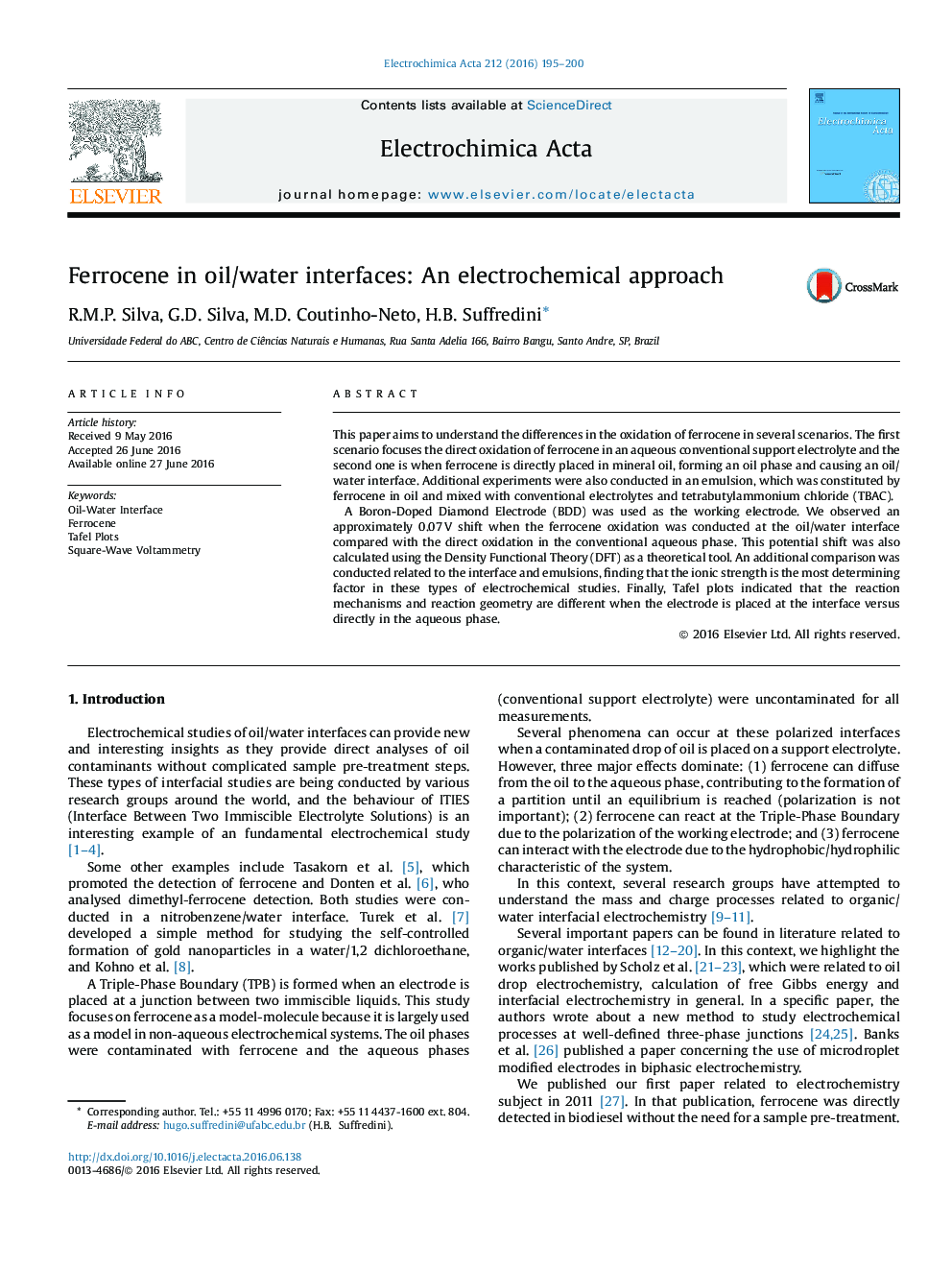| Article ID | Journal | Published Year | Pages | File Type |
|---|---|---|---|---|
| 6605897 | Electrochimica Acta | 2016 | 6 Pages |
Abstract
A Boron-Doped Diamond Electrode (BDD) was used as the working electrode. We observed an approximately 0.07Â V shift when the ferrocene oxidation was conducted at the oil/water interface compared with the direct oxidation in the conventional aqueous phase. This potential shift was also calculated using the Density Functional Theory (DFT) as a theoretical tool. An additional comparison was conducted related to the interface and emulsions, finding that the ionic strength is the most determining factor in these types of electrochemical studies. Finally, Tafel plots indicated that the reaction mechanisms and reaction geometry are different when the electrode is placed at the interface versus directly in the aqueous phase.
Related Topics
Physical Sciences and Engineering
Chemical Engineering
Chemical Engineering (General)
Authors
R.M.P. Silva, G.D. Silva, M.D. Coutinho-Neto, H.B. Suffredini,
